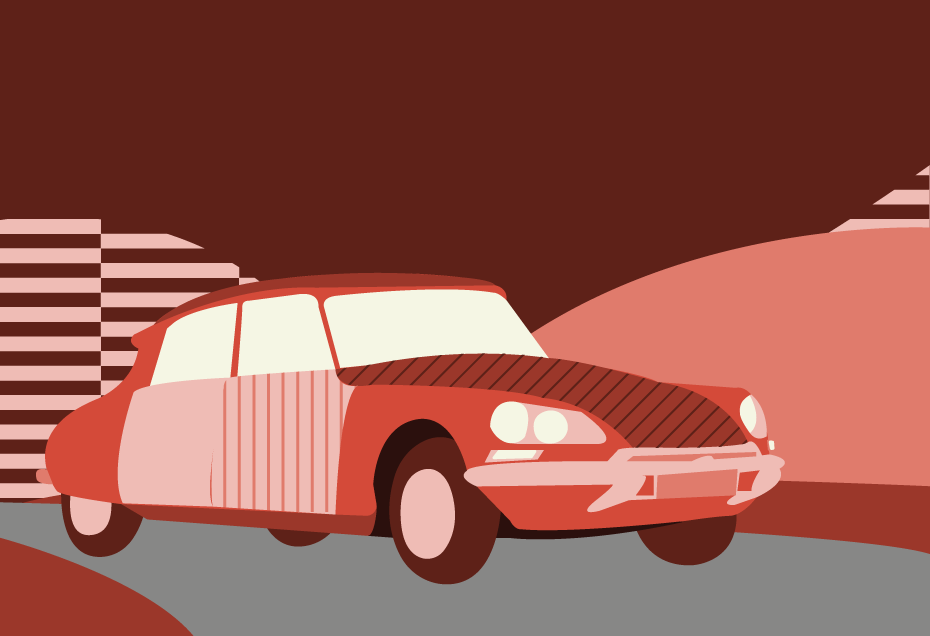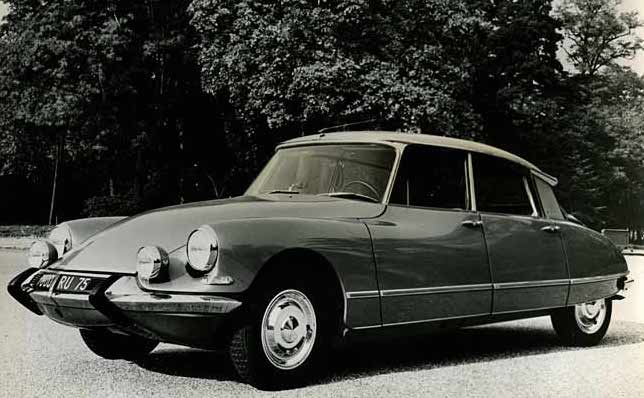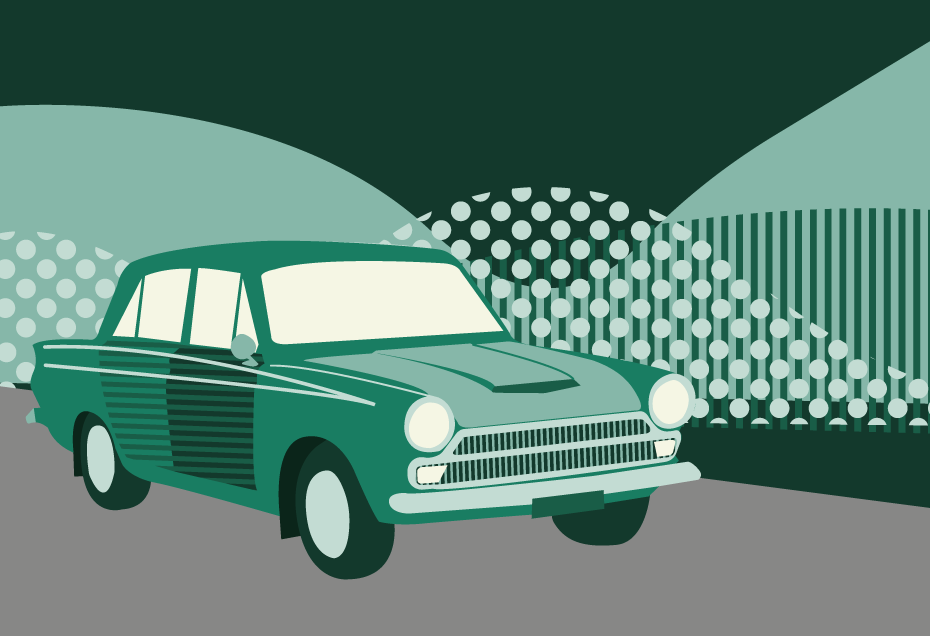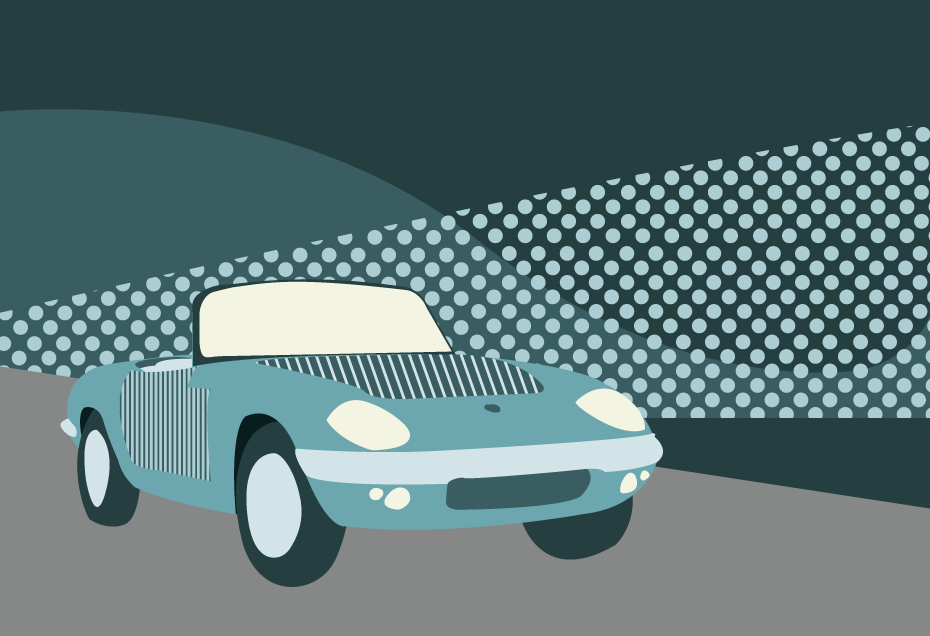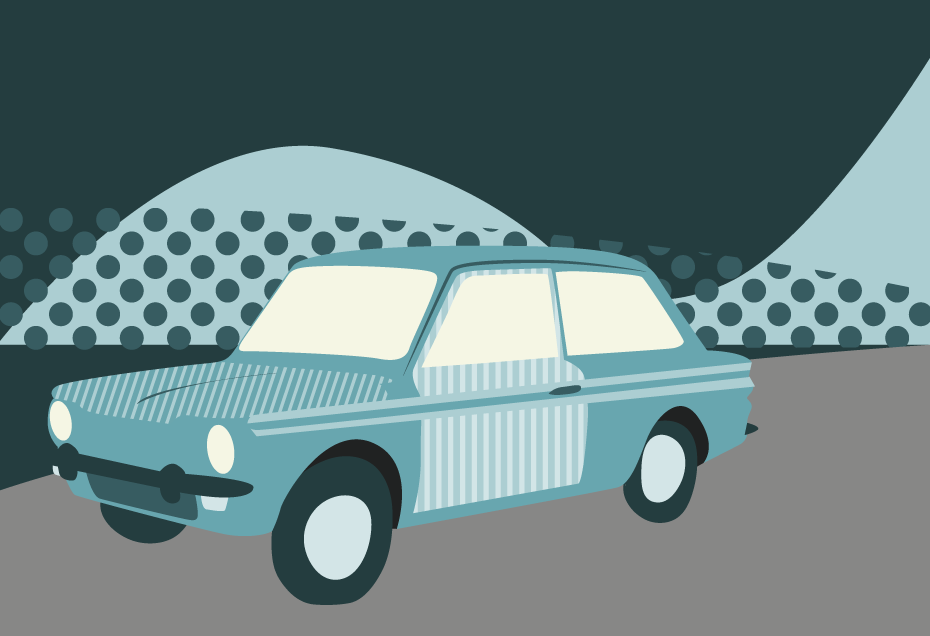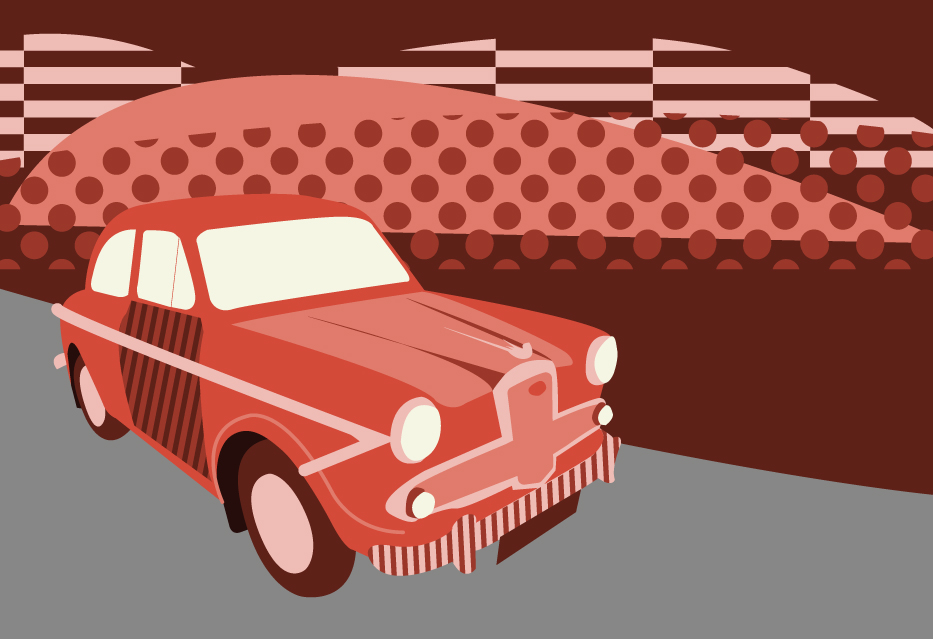It was the car that looked “as if it had fallen from the sky”. In 1955, the Citroen DS stunned the motoring world when it was launched at the Paris Motor Show.
Aerodynamic, futuristic, with a huge raking bonnet and pioneering self-levelling suspension, the French car-maker took 12,000 orders on the first day alone.
We take a look back at the legendary “Goddess”.
Not too many cars receive a eulogy from a world-renowned philosopher. In fact, the Citroen DS may well have that accolade all to itself.
In a much-quoted essay, French philosopher Roland Barthes – usually to be found ruminating on social theory and anthropology among other subjects – was moved to turn his attention to a vehicle he described as “one of those objects from another universe”.
It was Barthes who, two years after the DS (pronounced Deesse, French for Goddess) was launched in 1955, wrote that “it is obvious that the new Citroen has fallen from the sky inasmuch as it appears at first sight as a superlative object”.
The DS then, was more than a car, it was a statement of Gallic flair and ingenuity, an artistic masterpiece that transcended motoring and seared itself into the French psyche.
See one on the roads today and you’re likely to be every bit as awestruck as those visitors to the Paris Motor Show who placed 743 orders within 15 minutes of the car going on display, and 12,000 by the end of the day.
But the front wheel drive DS wasn’t just a design tour-de-force, it was also groundbreaking under its other-wordly skin, setting new standards in ride quality, handling and braking – indeed, it was the first production car equipped with disc brakes.
As well as its jaw-dropping, shark-like stance, the DS was most famous for its hydropneumatic self-levelling suspension, which saw the car visibly sink down to its resting position after parking when the engine was turned off.
Apart from anything else, it makes the wheels impossible to clamp!
The suspension, developed by Paul Magès, an engineer with little formal training, enabled the driver to select an appropriate ride height for the terrain, and produced a journey often described as like riding a “magic carpet” in sumptuous armchair-like comfort.
You can also safely drive a DS on three wheels, should the need arise, and it’s arguable that the smooth ride has never been bettered on any car since.
During 20 years of production, and long after they were replaced by the CX, the DS was ubiquitous on French roads, used as taxis, police cars, government vehicles and even ambulances in estate guise.
They encapsulated the very essence of “vive la difference”, and could scarcely have been more different from their contemporary British Rovers, Wolseleys, and Austins, which were more subtle developments of their post-war predecessors compared with the revolutionary leap forward of the DS.
Like our illustration of the Citroen DS at the beginning of the article?
Download a free high-quality poster version here.
Development and launch
The successor to the Traction Avant, launched in 1934, was 18 years in secret development and was designed by Italian sculptor and industrial designer Flaminio Bertone and French aeronautical engineer André Lefèbvre, who also has the 2CV on his, er, CV.
Lefèbvre was presumably responsible for the class-leading drag co-efficient of just 0.38.
As well as that hydraulic suspension, the new car also boasted power steering, clutchless semi-automatic transmission, front power disc brakes, and a single-spoke steering wheel, making the Citroen a symbol of a rejuvenated France shattered by the war and ready to fully engage in the Space Age of the 1950s.
Under the bonnet, Citroen originally wanted to use an air-cooled, flat six similar to that which powered the Porsche 911, but the idea was shelved because of technical and financial issues.
Thus the engine in the original DS19 was relatively old-fashioned, a 1911cc, four cylinder unit producing 75hp derived from that used in the 11CV Traction Avant but with a reworked aluminium cylinder head.
Not surprisingly, all this development came at a cost, with the DS19 a whopping 65 per cent more expensive than the Traction Avant.
Despite this, Citroen took 80,000 deposits during the 10 days of the Paris Motor Show, a record which stood for more than 60 years until it was eclipsed by the Tesla Model 3, another innovative car for entirely different reasons.
On the road
When Motor tested a DS19 in December 1956, a year after launch, they described a car that was “economical as well as fast, which is at home on winding old fashioned roads as well as on modern highways”.
Everything is relative, of course, and fuel consumption of 29.8mpg and a top speed of 86mph would be neither economical nor fast today.
But at the time, they were impressive enough, comfortably outscoring, for example, a Rover P4.
The magazine said that while some of Citroen’s innovations may have been “unconventional for the sake of being unconventional, most of the unorthodoxies…are magnificently justified by the results obtained”.
A roomy interior, generous headroom and exceptional visibility thanks to the slender roof pillars made the interior a welcoming space, while the hydro-pneumatic suspension was “undoubtedly far superior to anything else we have experienced”.
“Whereas most suspensions are very much a compromise, suiting certain loads and certain sorts of going better than others, the Citroen suspension is self-adjusting to any load, and is equally outstanding in its behaviour on good roads or unmade tracks,” the road tester reported.
“Superb” brakes were activated by applying varying degrees of pressure to a button, rather than a pedal, “rather like a rubber-covered dip switch”.
Changing gear using the semi-automatic gearbox took a little getting used to, with a “finger-light” gear lever – manually operated but without a clutch – positioned above the steering wheel.
“Only moderate skill and familiarity are needed from the driver to secure really smooth travel, but the effect of throttle opening on clutch engagement speed needs to be known for a driver to have either real performance or real smoothness on call,” said Motor.
Minor annoyances included a “strip-type speedometer on which the needle moves in erratic jerks”, a too-small locker on the fascia, an inadequate rear-view mirror, and a foot-operated parking brake.
The magazine’s road test took them over major and minor roads in the UK, cobbled byways in Flanders, and even unmade tracks across open commons, and the Citroen coped with them without fuss.
“Introduction of this model was a very bold step,” it said, “and, whilst it might have been almost equally bold for a motorist to order one of the first models a year ago, the current production version aroused our enthusiasm to a quite unusual extent.”
For 1961, the DS19 saw a performance boost from 75 to 85bhp, thanks largely to fitting a larger, double-choke Weber carburettor and raising the compression ratio, and Autocar predicted that “a buyer today can be sure that his purchase will not be outdated for years to come”.
And with the DS in production for another 14 years, they weren’t wrong.
The cheaper ID
As we’ve noted, that DS was not a cheap car, and sales in the UK – where the cars were built in the Citroen factory at Slough – were merely steady.
The much cheaper Traction Avant was still in production, and Citroen was loath to discontinue their pre-war stalwart until they could make the DS more affordable.
This led to the introduction, in 1957, of the downgraded ID Luxe, which shared the same body but fewer of the luxuries and technical innovations of its pricier brother.
It also had less power, just 69bhp compared with 75bhp, and gone were the power steering, power brakes and hydraulic clutch and gear change, replaced by a conventional transmission and clutch.
A far simpler hydraulic system was fitted, used to operate the hydropneumatic suspension only, while inside plasticised matting replaced foam-backed carpet, seats were simplified, the dash was painted metal, and the door trim and window winders were plastic.
Some exterior chrome was dispensed with, including on the headlamp rims, and the rear screen was made out of plexiglass instead of glass.
All of this helped reduce the price by a significant 25 per cent, but even that was not enough for some Traction enthusiasts, so the even cheaper ID 19 Normale – using the Traction 11D’s 62bhp engine – was brought in to help further bridge the price gap.
Adrian Flux Classic Car Insurance
The Normale took austere to extremes, with a front bench seat, little in the way of instrumentation, and a steel bonnet replacing aluminium, but few wanted such a stripped-back car and only about 400 were sold.
A more upmarket version, the ID Confort, including some DS interior trim such as seats, carpets and door trim, proved the most popular incarnation.
Over the years, as the DS improved, the ID gained more and more of its sibling’s technology and creature comforts, always staying a step or two behind in development to keep the price lower.
It was renamed as the D Spécial and D Super in 1969 until the end of production in 1975.
The Safari
A huge estate version, called the Safari in the UK, Break in France and Wagon in the US, was introduced in 1958, based on the ID but with all the engine options of the DS saloons throughout its lifetime.
It proved to be one of the most competent load luggers in motoring history, its self-levelling suspension ensuring that however much you piled into the cavernous boot, the car would always automatically compensate.
Indeed, the BBC and others regularly used the Safari as a camera car, the hydraulic suspension providing the steadiest platform for filming of any car.
The Familiale version had three rows of seats, turning it into an eight-seater, while the standard car had two rear seats in the boot which folded down into the floor when not in use.
A wheelbase long enough to cater for a stretcher saw the Safari converted into ambulances, and hearse conversions were also common.
In 1972, CAR magazine pitted a 2.3-litre Safari against a Volvo 145 and a Peugeot 504.
As you’d expect, the Volvo scored highly on build quality and safety, but suffered from poor ride and handling, while the Citroen was “at the opposite end of the scale completely”.
“Its suspension is fantastic and it certainly carries a large load,” said the magazine. “The Citroen is something special; unique is probably a better expression.”
But the road tester had reservations about how long it would take to get used to the brakes and steering and “to learn how to exploit the high level of roadholding”.
It seems strange to mark a car down for handling too well, but CAR plumped for the Peugeot as its number one choice. At the time, it seems, “to have a Peugeot is to be in”.
Convertible and specials
A convertible version of the DS may never have come to pass but for the initially independent conversions of carrossier Henri Chapron, who unveiled his original cabriolet conversion at the 1958 Paris Salon.
His La Croisette Cabriolet, converted using a complete car purchased from Citroen, proved so popular that the manufacturer commissioned him to build a factory convertible based on a design by Bertone.
The stylish and beautiful Cabriolet d’Usine was built for Citroen’s dealer network, with 1,365 going on to be sold.
The car’s two doors and long, sloping tail gave the Décapotable sports car looks, and it remains one of the most stunning drop-tops of a saloon car ever made.
But Chapron didn’t stop there, producing a host of other specials over the years, including a 6.3-metre limousine for President de Gaulle, Le Paris coupe, Le Caddy Décapotable – later with a redesigned rear wing – and Le Dandy and Concorde coupes, as well as two further limousines, the Majesty and Lorraine.
Other coachbuilders had a stab at re-imagining the DS, with the French Heuliez company and German coachbuilder Reutter both coming up with four-door convertibles.
Meanwhile, Frenchman Hector Bossaert teamed up with the Italian bodywork company Frua to produce the GT 19 Coupe, a pretty, chopped-down two-seater with a slim waistline and a beefed up 97hp engine.
The two most outrageous conversions are the Reactor, created by American customiser Gene Winfield, and Michelin PLR, a 10-wheeled mobile tyre evaluation machine.
Winfield’s creation married a DS chassis to a 180bhp flat-six engine from a Corvair, clothed in a low-slung, space age aluminium body, while the Michelin vehicle was based on a Safari and is now used as a promotional vehicle.
Ongoing development
The early DS and IDs, although not slow, were considered underpowered for their size, and efforts to improve performance were made throughout its 20-year life.
The DS19 became the 19a (eventually DS20) in 1965, with an increase in capacity from 1911cc to 1985cc, while the DS21, with a 2175cc, five main bearing unit, was also launched the same year.
A new luxury version called the Pallas was launched for the larger-engined car, featuring external trim embellishments, including an extra two headlamps, and leather seats.
Autocar tested this car in September 1965, and noted that the “new short-stroke four-cylinder engine gives it a quicker and smoother heart-beat, as well as considerably more power”.
The new unit produced an improved 109bhp, propelling the DS to between 110 and 115mph.
In the cabin, “every detail is carefully and expensively finished” and the magazine was won over by the combination of greater refinement inside and out.
“Without doubt this is the most luxurious, as well as the fastest Citroen ever marketed, and its new engine characteristics should render it much more suitable than its forerunners for UK traffic conditions,” it said.
After a minor nose redesign in 1962, it received a more noticeable upgrade for the 1968 model year, with the hitherto exposed headlamps enclosed behind curved glass, giving it a more aggressive look.
The inner two of the four headlamps were linked to the wheels by cable, and swivelled in the direction of travel round bends, enabling drivers to “see round corners”.
The outside two lamps were self-levelling, aimed at maintaining a constant beam ahead in heavy braking or acceleration.
With the millionth DS rolling off the production lines in 1969, to celebrate the DS21 was offered with Bosch electronic fuel injection, the first mass-market car to use it, boosting power to 139bhp.
By 1972, engine capacity was up once again, to 2347cc, for the DS23 – the final upgrade of the old car’s life, with 141bhp available in fuel injected mode.
In July 1973, CAR magazine put the latest DS toe-to-toe with the new BMW 520 and the rotary-engined novelty of the NSU Ro80.
Despite a design that was 18 years old, the magazine said the car didn’t look outdated, and its “great loping stride out up countries like other cars eat up miles”.
Like our illustration of the Citroen DS at the beginning of the article?
Download a free high-quality poster version here.
As always, operating the button brake pedal is “initially nerve-wracking”, but once acclimatised the Citroen provides an “unworldly sort of motoring in which the car spends most of its time working with, rather than against, the driver once the oddball factors have been accepted”.
The BMW just wins out as the best all-rounder, but if you wanted a vehicle for “fast touring and one that can be relied upon to behave perfectly in bad conditions, (the DS) is a fantastic vehicle”.
By the time it was withdrawn from sale in 1975, the DS had sold more than 1.45m worldwide, its production peaking in 1970.
It was replaced by the CX, an evolution of the DS design which shared many of its characteristics and voted European Car of the Year in its launch year.
Although selling more than 1.2m models during its 17-year production run, it never attained the near mythical status of the DS, which was named the most beautiful car of all time by Classic & Sports Car magazine.
And that takes some topping.
The DS in motorsport
You’d think such a heavy car, with most of its weight over the front wheels, would not fare well in motorsport, but the DS proved a revelation in events where the going got rough.
Its unique suspension perfectly suited rallying, where sustained high speed over uneven surfaces is paramount, and a DS won the Monte Carlo Rally in 1959 and 1966.
Pauli Toivonen drove to DS19 to victory in Finland’s 1000 Lakes Rally in 1962, while a DS21 driven by Lucien Bianchi was the moral winner of the London to Sydney Marathon – a day ahead of Andrew Cowan in a Hillman Hunter, Bianchi was denied victory by a collision with a Mini just 30 miles from the finish.
Chopped down coupe versions of the DS, with a shortened wheelbase for better manoeuvrability, were also raced successfully in rallies.
Buying a DS
Prices have increased in recent years and a really good, top of the range DS will set you back between £20,000 and £30,000, although you can still get a decent basic model for around £10,000.
Because so much of what’s good about a DS hinges on its hydraulics, so you’ll need to drive one to really know if you’re spending your money wisely.
The ride and steering should be impeccable, and the suspension should rise within 20 to 30 seconds from cold.
There are a few rust spots to check, such as the top of the inner wings, the boot floor, the rain gutters, the sills, and the windscreen header rail. If these are all clear, you’re probably on to a winner.
The engines are noisy but reliable, but check for a whining gearbox. The DS can run on unleaded, while many are converted for LPG, and they’ll typically return 20-30mpg.
Insurance from Adrian Flux
Get classic car insurance for your Citroen DS from Adrian Flux.
Features can include:
- Agreed value
- Limited mileage discounts
- Owners club discount
- Laid up cover
- Wedding hire cover


